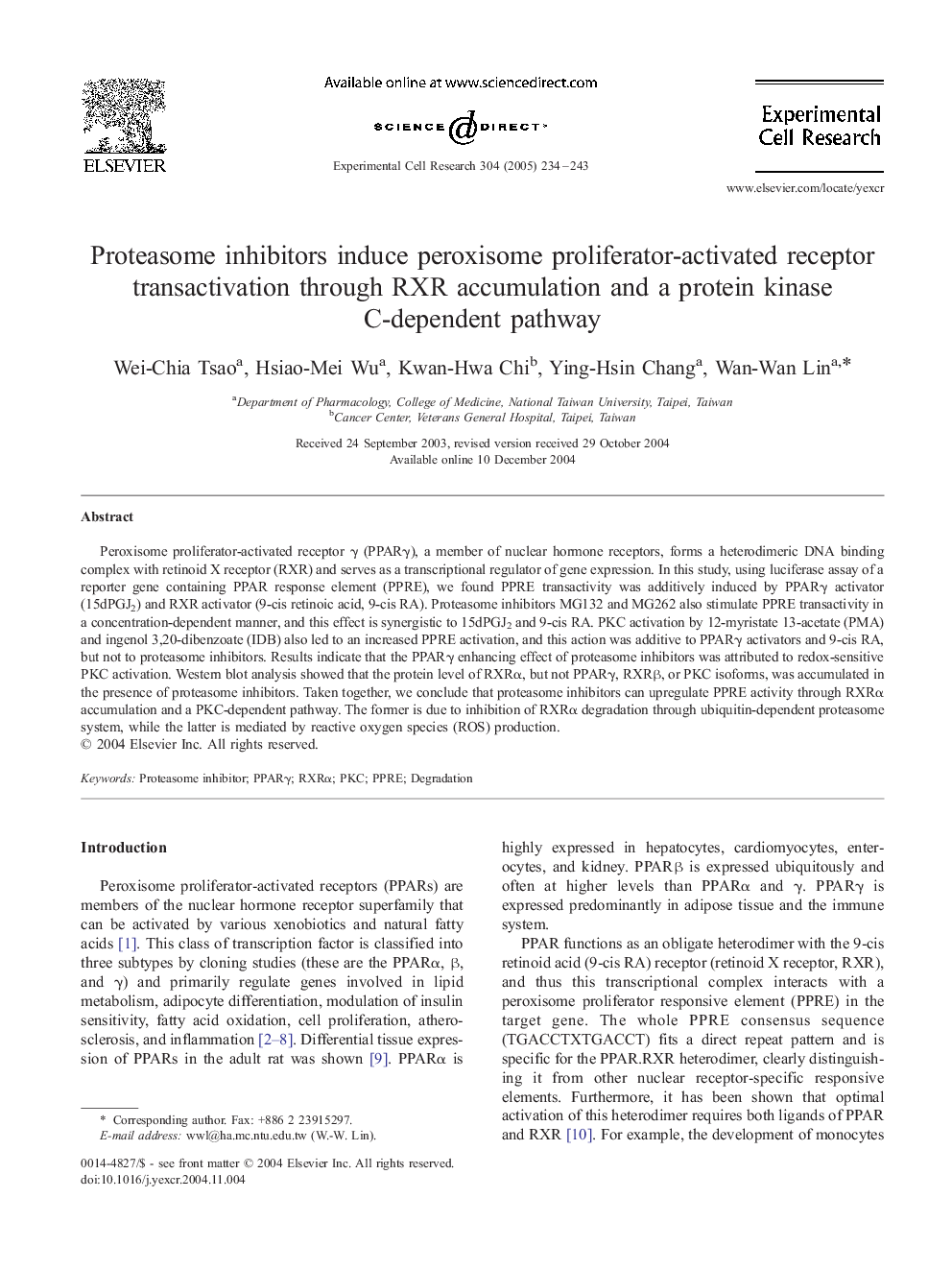| Article ID | Journal | Published Year | Pages | File Type |
|---|---|---|---|---|
| 10905615 | Experimental Cell Research | 2005 | 10 Pages |
Abstract
Peroxisome proliferator-activated receptor γ (PPARγ), a member of nuclear hormone receptors, forms a heterodimeric DNA binding complex with retinoid X receptor (RXR) and serves as a transcriptional regulator of gene expression. In this study, using luciferase assay of a reporter gene containing PPAR response element (PPRE), we found PPRE transactivity was additively induced by PPARγ activator (15dPGJ2) and RXR activator (9-cis retinoic acid, 9-cis RA). Proteasome inhibitors MG132 and MG262 also stimulate PPRE transactivity in a concentration-dependent manner, and this effect is synergistic to 15dPGJ2 and 9-cis RA. PKC activation by 12-myristate 13-acetate (PMA) and ingenol 3,20-dibenzoate (IDB) also led to an increased PPRE activation, and this action was additive to PPARγ activators and 9-cis RA, but not to proteasome inhibitors. Results indicate that the PPARγ enhancing effect of proteasome inhibitors was attributed to redox-sensitive PKC activation. Western blot analysis showed that the protein level of RXRα, but not PPARγ, RXRβ, or PKC isoforms, was accumulated in the presence of proteasome inhibitors. Taken together, we conclude that proteasome inhibitors can upregulate PPRE activity through RXRα accumulation and a PKC-dependent pathway. The former is due to inhibition of RXRα degradation through ubiquitin-dependent proteasome system, while the latter is mediated by reactive oxygen species (ROS) production.
Related Topics
Life Sciences
Biochemistry, Genetics and Molecular Biology
Cancer Research
Authors
Wei-Chia Tsao, Hsiao-Mei Wu, Kwan-Hwa Chi, Ying-Hsin Chang, Wan-Wan Lin,
